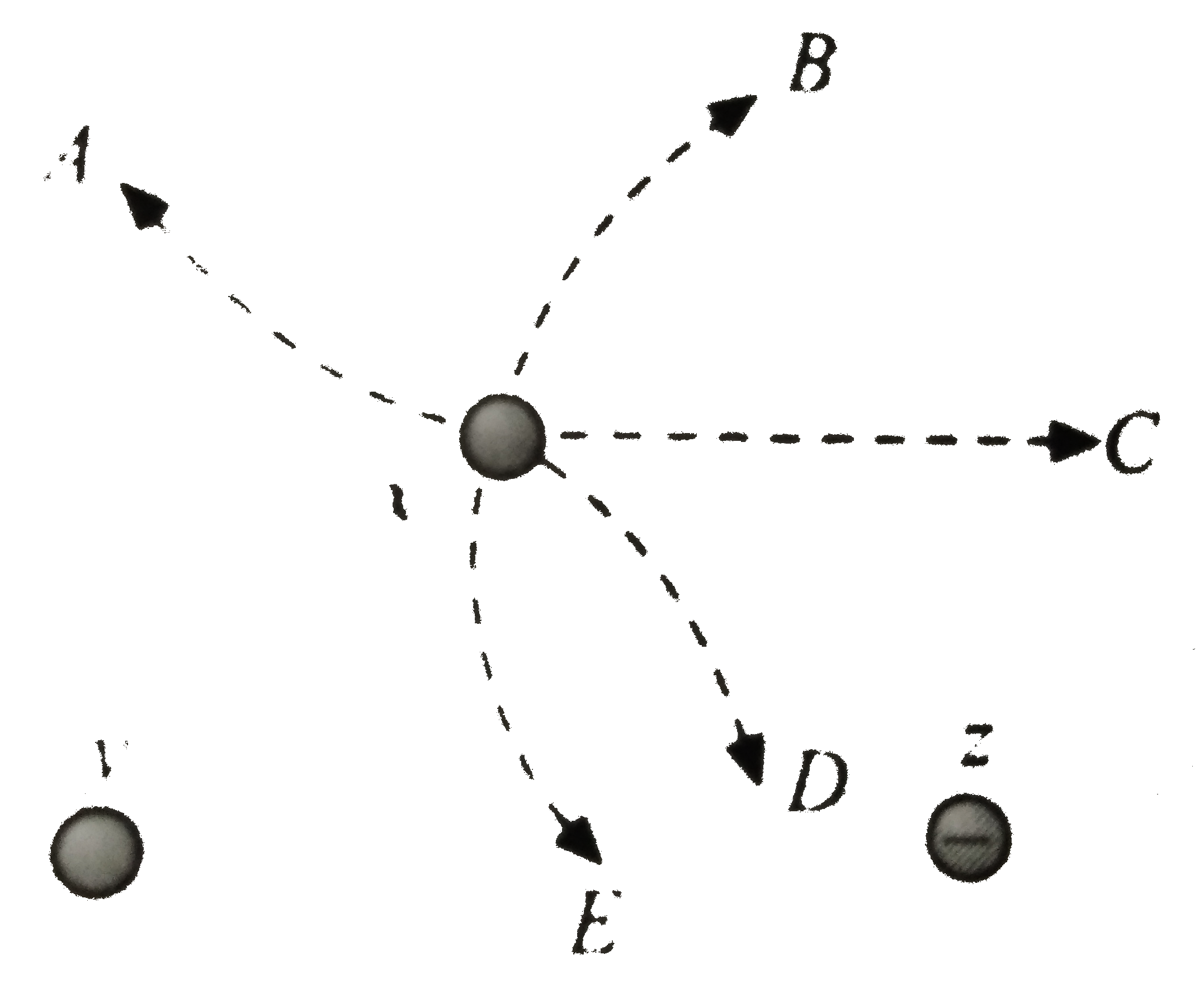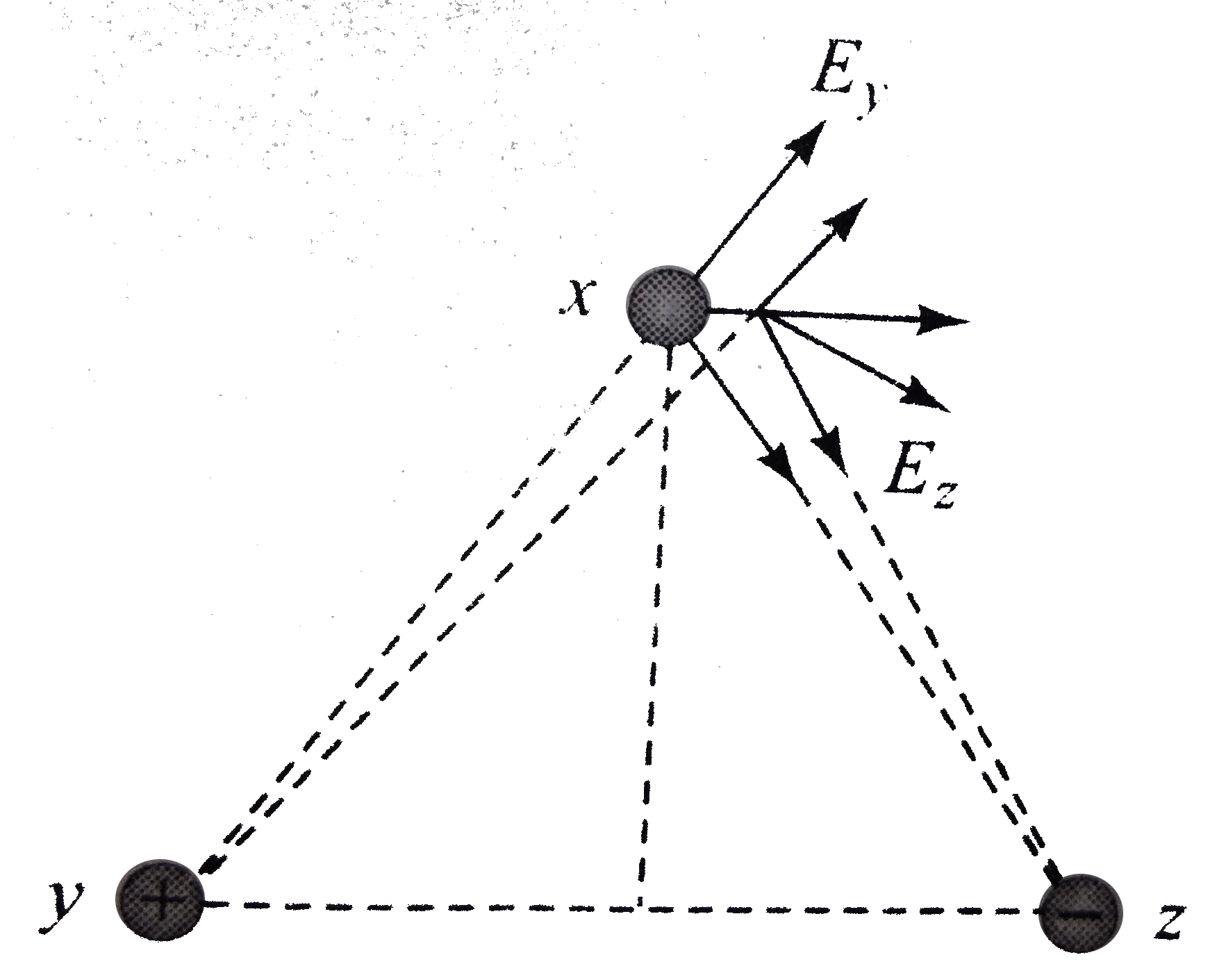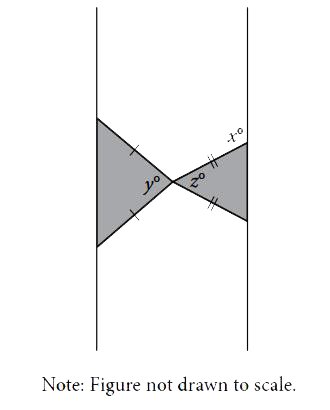Three small spheres x,y, and z carry charges of equal magnitudes and with signs shown in fig. They are palced at the vertices of an isosceles triangle with the distance betwwen x and y equal to the distance between x and z. sphere y and z are held in place, but sphere x is free to move on a frictionless surface.

(a) what is the direction of the electric force on sphere x at the point shown in the figure?
(b) Which path is sphere x likely to take when released?
(a) along C.
(b) Path D. As x starts moving, the magnitude of electric field dureto charge on z increases. The resultant electric field chages the direction asshown in the figure. Hence, we can say the charge particle follows path D.

Topper's Solved these Questions
- COULOMB LAW AND ELECTRIC FIELDBook:CENGAGE PHYSICS ENGLISHChapter:COULOMB LAW AND ELECTRIC FIELDExercise:Subjective Type
Explore 15 Videos
- COULOMB LAW AND ELECTRIC FIELDBook:CENGAGE PHYSICS ENGLISHChapter:COULOMB LAW AND ELECTRIC FIELDExercise:Subjective
Explore 32 Videos
- COULOMB LAW AND ELECTRIC FIELDBook:CENGAGE PHYSICS ENGLISHChapter:COULOMB LAW AND ELECTRIC FIELDExercise:Solved examples
Explore 10 Videos
- CENGAGE PHYSICS DPPBook:CENGAGE PHYSICS ENGLISHChapter:CENGAGE PHYSICS DPPExercise:subjective type
Explore 51 Videos
- ELECTRIC CURRENT & CIRCUITSBook:CENGAGE PHYSICS ENGLISHChapter:ELECTRIC CURRENT & CIRCUITSExercise:Kirchhoff s law and simple circuits
Explore 15 Videos
Similar Questions
The distance between the planes 3x+5y+z=8 and 3x+5y+z+27=0 is :
View SolutionFind the distance between the parallel planes x+y−z+4=0 and x+y−z+5=0.
View SolutionIf x,y,z be three numbers in G.P. such that 4 is the A.M. between x and y and 9 is the H.M. between y and z , then y is
View Solution
Two isosceles triangle are shown above. If 180-z=2y and y=75, what is the value of x?
View SolutionThe line xk=y2=z−12 makes an isosceles triangle with the planes 2x+y+3z−1=0andx+2y−3z−1=0 then the value of k is-
View SolutionFind the distance between the parallel planes x+y−z+4=0andx+y−z+5=0.
View SolutionThe points A(x,y),B(y,z) and C(z,x) represents the vertices of a right angled triangle, if
View SolutionThe lines x=y=z meets the plane x+y+z=1 at the point P and the sphere x2+y2+z2=1 at the point R and S, then
View SolutionFind the distance between the planes 2x–y+2z=5and5x–2.5y+5z=20.
View SolutionFind the distance between the line x+1−3=y−32=z−21 and the plane x+y+z+3=0.
View Solution
